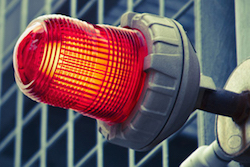Operators need to adopt new network capacity strategies in order to prevent LTE hotspots reaching their limit within three years, new research has claimed.
Amdocs’ annual State of the RAN report said investments in “smart” data capacity solutions, such as dynamic bandwidth allocation, were crucial to averting the threat of radio access networks (RAN) reaching overload before the end of the decade.
The study found that 80 percent of network traffic was driven by just 10 percent of subscribers, who consume up to 10 times more data than the average user.
Additionally, the top 20 percent of locations in cities, including stadiums and downtown areas, accounted for 80 percent of all network traffic, the findings revealed.
According to Amdocs, while the introduction of small cells and carrier-grade Wi-Fi could offer some traffic offload, it would not prove to be a long-term fix as 4G devices continue to proliferate and data demands grow as a result.
Effectively identifying and addressing high-demand segments is therefore “critical” to managing network capacity, Amdocs said.
Rebecca Prudhomme, VP for Product and Solutions Marketing at Amdocs, said: “This research shows that service providers are facing a multi-dimensional challenge – to provide ever-increasing network capacity, greater coverage and better quality, particularly in mobile hotspots.
“The answer is no longer simply just about adding hardware – small cells and Wi-Fi will offer new options ‒ but to introduce smart solutions to prioritise investment and allocate resources automatically to maximise customer experience and profitability.”
Read more:




